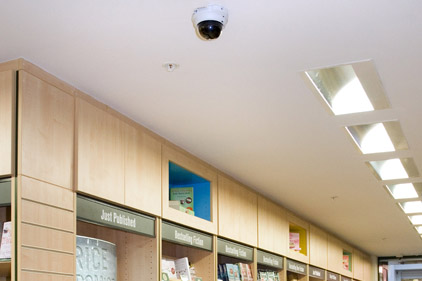
|
| Along with 180-/360-deg. cameras, fixed dome cameras will be the fastest-growing product segments within the IP video industry in 2014, according to research firm, IHS. PHOTO COURTESY OF AXIS COMMUNICATIONS |
In its fifth annual year-end look ahead at the main trends in surveillance for the coming year, IHS has highlighted a number of technologies and opportunities that should serve as a heads-up for systems integrators who are looking to stay ahead of the curve in 2014 — which should be another banner year for video surveillance.
In its report, IHS states the overall market for video equipment will grow by more than 12 percent in 2014. The fastest-growing product segments within that market will be fixed-dome and 180-/360-deg. network cameras. In terms of top verticals, that distinction goes to the city surveillance and utilities/energy sectors. Savvy integrators will keep these things in mind as they pursue business opportunities in the next 12 months.
There are also a number of technology- and product-related trends integrators should be aware of, including thermal, panoramic, power, analytics and audio.
While prices of thermal cameras have come down recently, making them more accessible to a larger customer base, they should become even more so moving forward. IHS forecasts the largest average selling price decline for video products during the next few years will be in the uncooled thermal camera segment. When combined with increased competition, new products and the aforementioned new end user markets, 2014 should be a breakthrough year for thermal cameras.
The big winner in camera technology, according to IHS, will be in the panoramic network camera segment, which is expected to see an increase of 60 percent. This growth will be aided by increased market share in the retail, airport, casino and other vertical markets where monitoring wide indoor areas is a key requirement of their video systems.
Due to developments in standards and products, power over Ethernet (PoE) has become a much more viable option for security managers. The continued move to network video surveillance has caused increased focus on the supporting network infrastructure, and power is a crucial element of that focus. Looking forward, IHS expects to see manufacturers expand and further develop their portfolios of low-powered cameras to conform to the PoE+ standard. Greater market acceptance also will be buoyed by technologies that help overcome the distance limitations of Ethernet and PoE, which have until now held back their acceptance.
Video analytics is another area IHS highlights in its report. Low-end analytic applications have long been embedded in devices and offered as free features. Looking at the question of whether there is a market for analytics or whether they will simply be offered for free, IHS states, “It’s clear that vendors can no longer charge for basic algorithms.” However, that might not be the case in 2014, which the firm says should continue to see strength in applications where end users require reliable, advanced analytics.
Audio is another area to watch. In 2013, more than seven out of every 10 network cameras sold had some form of audio capability, either unidirectional or bidirectional, despite consensus from systems integrators that these capabilities are rarely used, according to IHS. Still, that market penetration should be on the rise in 2014, due to increasing awareness of embedded audio analytics and sound source localization.






